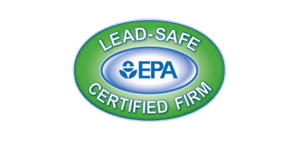In this comprehensive guide, we will delve into the different types of water damage that can occur in your home. Understanding these types is crucial for safeguarding your property and taking appropriate action when water damage strikes.
Key Takeaways:
- There are various types of water damage that can affect your home.
- Knowing the causes and categories of water damage can help you respond effectively.
- Hidden water damage and mold growth are potential complications of water damage.
- Seek professional assistance for severe water damage cases.
- Preventative measures can reduce the risk of water damage in your home.
Common Causes of Water Damage
Water damage can wreak havoc on your home, leading to costly repairs and potential health hazards. Understanding the common causes of water damage is crucial for taking proactive measures to protect your property. By addressing these root causes, you can significantly reduce the risk of water damage and its detrimental effects.
Here are some of the most common causes of water damage:
- Leaking pipes: Aging or damaged pipes can develop leaks, leading to water seepage and damage to your walls, floors, and belongings.
- Burst water heaters: If your water heater malfunctions or bursts, it can result in a sudden influx of water that can flood your home.
- Plumbing issues: Clogged pipes, faulty plumbing fixtures, or improper installation can cause water to back up or leak, causing damage to your property.
- Natural disasters: Severe weather events such as hurricanes, flooding, or heavy rainfall can result in extensive water damage.
- Faulty appliances: Malfunctioning appliances like dishwashers, washing machines, or refrigerators with faulty water lines can lead to water leaks and subsequent damage.
Taking preventative measures and addressing these common causes of water damage can save you from the stress and financial burden of dealing with extensive repairs. Regular maintenance, prompt repairs, and proper installation of appliances and fixtures are essential for minimizing the risk of water damage in your home.
Stay alert and be proactive in preventing water damage by staying informed about the potential risks in your home. In the next sections, we will explore different types of water damage and provide guidance on how to address and mitigate the effects of each category.
Category 1 Water Damage
When it comes to water damage, category 1 refers to clean water that doesn’t pose an immediate health risk. This type of water damage typically originates from a sanitary source, such as broken water supply lines or overflowing sinks. While category 1 water damage may not be as severe as other categories, it still requires prompt attention to prevent further issues.
If you’ve experienced category 1 water damage in your home, it’s important to take immediate action to address the situation. Ignoring or delaying the necessary steps could lead to the development of mold, structural damage, or potential health hazards. Here are the key steps to follow when dealing with category 1 water damage:
- Turn off the water source: Before attempting any cleanup or restoration, it’s crucial to locate and shut off the source of the water to prevent further damage.
- Protect yourself: Even though category 1 water is deemed clean, it’s still a good idea to wear protective gloves and boots as a precautionary measure.
- Remove standing water: Use a wet/dry vacuum or pumps to remove any standing water from the affected area. This will help prevent additional damage and mitigate the risk of mold growth.
- Thoroughly dry the area: Utilize fans, dehumidifiers, or open windows to promote air circulation and speed up the drying process. This step is essential in preventing mold growth.
- Clean and disinfect: Once the area is dry, clean all surfaces thoroughly with commercial cleaning products or a solution of water and mild detergent. This will help eliminate any potential bacteria or contaminants.
- Monitor for mold: Keep a close eye on the affected area for any signs of mold growth, such as a musty odor or visible spots. If mold appears, it’s crucial to address it promptly to prevent further damage and potential health issues.
By following these steps and acting quickly, you can effectively address category 1 water damage and minimize the potential consequences. Remember, when in doubt or dealing with extensive damage, it’s always best to seek professional assistance to ensure a thorough restoration process.
Category 2 Water Damage
Category 2 water damage, also known as “gray water,” poses a moderate health risk due to potential contaminants present in the water. It is crucial to understand the scenarios that fall under category 2 and how to handle such incidents to minimize the impact on your home and health.
Examples of category 2 water damage include:
- Water from washing machines
- Dishwasher leaks
- Overflowing toilet bowls
When faced with category 2 water damage, it is important to take immediate action to minimize further damage and prevent the growth of mold and bacteria. Here are the steps you should follow:
- Ensure personal safety: Before handling any water damage, make sure to wear protective gear such as rubber gloves, goggles, and a face mask.
- Stop the source: If possible, turn off the water supply or repair the leakage to prevent additional water from entering your home.
- Remove standing water: Use a wet/dry vacuum or buckets to remove as much standing water as possible.
- Dispose of contaminated materials: Any porous materials that have been saturated with the gray water, such as carpets, upholstery, or drywall, may need to be discarded to prevent the spread of contaminants.
- Clean and disinfect: Thoroughly clean and disinfect all affected areas using appropriate cleaning solutions, following the manufacturer’s instructions.
- Dry the area: Use fans, dehumidifiers, and open windows to promote air circulation and aid in the drying process. Ensure that the area is completely dry to prevent mold growth.
- Monitor for mold: Keep a close eye on the affected area for any signs of mold growth. If mold develops, seek professional remediation services to address the issue.
By following these steps, you can effectively handle category 2 water damage and minimize the risk of further harm to your property and health.
| Category 1 Water Damage | Category 2 Water Damage | Category 3 Water Damage |
|---|---|---|
| Clean water | Gray water | Black water |
| No health risks | Moderate health risks | Significant health risks |
| Examples: Broken water supply lines, overflowing sinks | Examples: Washing machine water, dishwasher leaks, toilet bowl overflows | Examples: Sewage backups, flooding, water with hazardous substances |
Category 3 Water Damage
Category 3 water damage is the most severe form of water damage and poses significant health risks. It occurs in situations involving sewage backups, flooding from rivers or streams, or water contaminated with hazardous substances. Dealing with category 3 water damage requires proper safety precautions and professional remediation to ensure the health and wellbeing of your home and its occupants.
When faced with category 3 water damage, it is crucial to prioritize your safety and take immediate action. The contaminated water may contain harmful bacteria, viruses, chemicals, or other hazardous materials that can cause serious health problems if not handled properly.
To effectively address category 3 water damage, follow these essential safety precautions:
- Protect Yourself: Wear protective clothing, including gloves, masks, and boots, before entering the affected area. Avoid direct contact with the contaminated water to minimize the risk of infection or injury.
- Turn Off Utilities: Shut off the electrical power to the affected area to prevent electric shock hazards. If necessary, contact a professional electrician for assistance.
- Document the Damage: Take photographs or videos of the affected areas for insurance purposes. This documentation will help facilitate the claims process and ensure proper compensation for the repairs.
- Remove Standing Water: If it is safe to do so, use pumps or wet/dry vacuums to remove standing water. Dispose of the extracted water and any contaminated materials appropriately.
- Thoroughly Clean and Disinfect: Clean and disinfect all affected surfaces, objects, and materials in accordance with professional guidelines. Use appropriate disinfectants and antimicrobial products to ensure proper decontamination.
- Get Professional Remediation: Due to the high health risks associated with category 3 water damage, it is crucial to engage professional water damage restoration services. Experienced technicians have the necessary expertise, equipment, and knowledge to safely and effectively mitigate the damage, remove contaminants, and restore your property.
Remember, category 3 water damage requires immediate action. Ignoring or mishandling this type of damage can lead to severe health consequences and further deterioration of your property. By following the proper safety precautions and seeking professional assistance, you can effectively address category 3 water damage and restore your home to a safe and habitable condition.
Hidden Water Damage and Mold Growth
Water damage can sometimes be deceptive, lurking beneath the surface and causing hidden damage that may go unnoticed. Ignoring these hidden issues can lead to serious consequences, such as mold growth. It’s important to be aware of the signs of hidden water damage and understand the dangers mold can pose to your health and property.
Signs of hidden water damage:
- Musty odors: If you notice a persistent, unpleasant smell in your home, it could be a sign of hidden water damage. Mold and mildew thrive in damp environments and can produce musty odors.
- Peeling wallpaper or paint: Moisture from hidden water damage can cause wallpaper or paint to peel off the walls. This is a clear indication that water is present and potentially causing damage beneath the surface.
- Discoloration or stains: Water stains on ceilings, walls, or floors can be a telltale sign of hidden water damage. These stains may appear yellowish or brownish and indicate water infiltration.
- Warped or damaged flooring: Water damage can cause wood and laminate flooring to warp or buckle. If you notice any changes in your flooring’s appearance or texture, it could be a result of hidden water damage.
The dangers of mold:
Mold thrives in damp environments, making hidden water damage an ideal breeding ground. Exposure to mold can lead to various health problems, including allergies, respiratory issues, and even infections. Additionally, mold can cause structural damage to your home if left untreated, leading to costly repairs.
To mitigate the risks associated with hidden water damage and mold growth, it’s crucial to address the underlying cause and take immediate action. Professional inspection and remediation services can help identify and remove hidden water damage, ensuring a safe and healthy living environment.
Potential Health Effects of Mold Exposure
| Health Effects | Description |
|---|---|
| Allergies | Mold spores can trigger allergic reactions, causing symptoms like sneezing, coughing, and itchy eyes. |
| Asthma Attacks | Mold can exacerbate asthma symptoms and lead to more frequent and severe asthma attacks. |
| Respiratory Infections | Exposure to mold can increase the risk of respiratory infections, particularly in individuals with weakened immune systems. |
| Mold-Related Illnesses | Prolonged exposure to mold can cause severe illnesses, such as hypersensitivity pneumonitis and invasive fungal infections. |
Don’t underestimate the potential dangers of hidden water damage and mold growth. By staying vigilant and addressing any signs of water damage promptly, you can protect your health and preserve the integrity of your home.
Conclusion
In conclusion, understanding the different types of water damage is crucial for safeguarding your home and preventing potential hazards. By being aware of the common causes of water damage, you can take proactive measures to mitigate the risks and protect your property. Whether it’s category 1, 2, or 3 water damage, knowing how to address each situation appropriately is essential.
Remember to stay vigilant and keep an eye out for hidden water damage that may lead to mold growth. Signs like musty odors or peeling wallpaper could indicate underlying issues that require professional inspection and remediation. Acting promptly can help prevent further damage and potential health risks.
If you encounter water damage that seems beyond your capacity to handle, don’t hesitate to seek professional assistance. Water damage restoration experts have the necessary knowledge, experience, and equipment to effectively address water-related issues and restore your home to its pre-damaged condition.
By understanding the types of water damage, identifying the causes, and knowing how to deal with each category, you can take proactive steps to protect your home and minimize the potential impact of water-related incidents. With proper prevention and timely action, you can safeguard your property and ensure the health and safety of your family.
FAQ
What are the different types of water damage?
There are three main types of water damage, namely Category 1, Category 2, and Category 3. Category 1 refers to clean water, Category 2 involves “gray water” with contaminants, and Category 3 is the most severe and involves water that is highly contaminated or contains hazardous substances.
What are the common causes of water damage?
Water damage can occur due to various reasons such as leaking pipes, burst water heaters, plumbing issues, natural disasters, and faulty appliances. It is crucial to identify and address these common causes to prevent water damage in your home.
What is Category 1 water damage?
Category 1 water damage refers to clean water that doesn’t pose an immediate health risk. This type of water damage can occur from broken water supply lines or overflowing sinks. It is important to address Category 1 water damage promptly to prevent further issues.
What is Category 2 water damage?
Category 2 water damage, also known as “gray water,” involves water that may contain contaminants and present a moderate health risk. Examples of Category 2 water damage include water from washing machines, dishwashers, or toilet bowl overflows. Proper handling and remediation are necessary for Category 2 incidents.
What is Category 3 water damage?
Category 3 water damage is the most severe and poses significant health risks. It includes water from sewage backups, flooding from rivers or streams, or water containing hazardous substances. Category 3 incidents require immediate professional remediation and proper safety precautions.
How can hidden water damage lead to mold growth?
Hidden water damage, which may not be visible to the naked eye, can create the perfect environment for mold growth. Moisture accumulation behind walls, under floors, or in dark corners can lead to mold infestation. Signs of hidden water damage include musty odors, peeling wallpaper, or discolored patches.
What should I do if I suspect hidden water damage or mold growth?
If you suspect hidden water damage or mold growth, it is important to seek professional assistance. A thorough inspection by a qualified expert can identify the extent of the damage and determine the appropriate remediation steps to prevent further issues and ensure a safe living environment.



